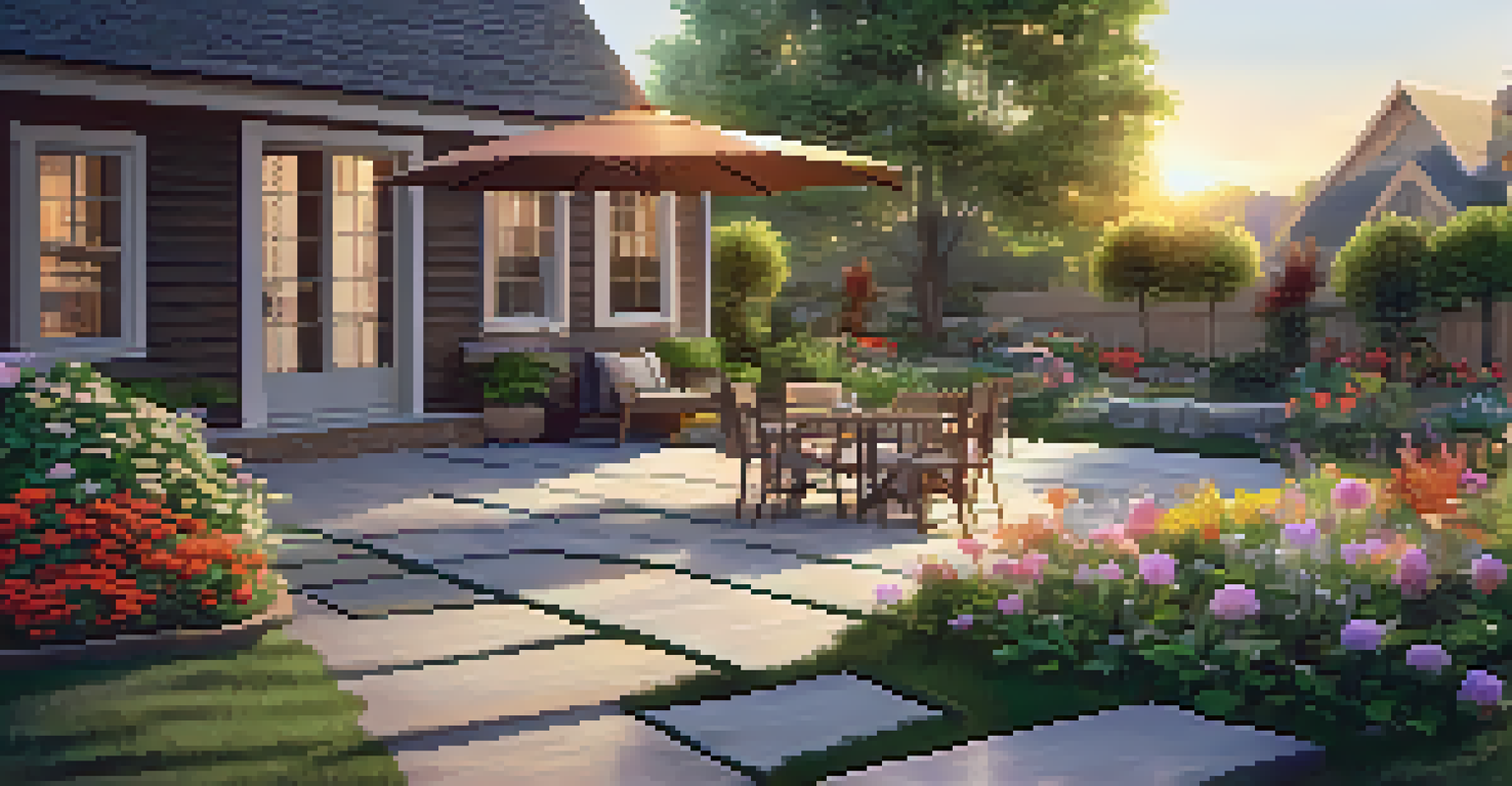Maximizing Property Sales with Virtual Tour Technology

Understanding Virtual Tour Technology in Real Estate
Virtual tour technology offers an innovative way to showcase properties, allowing potential buyers to explore homes from the comfort of their own devices. These immersive experiences provide a 360-degree view, giving viewers a realistic sense of space and layout. By using high-quality images and interactive elements, virtual tours make properties more appealing and accessible.
Virtual reality is no longer just a tool for gaming; it’s a revolutionary way to experience the world, including real estate.
This technology not only saves time for both buyers and sellers but also enhances the overall viewing experience. Imagine being able to walk through a home without leaving your couch, deciding if it feels right for you before scheduling an in-person visit. It’s a game-changer that aligns with the modern buyer's lifestyle, making property exploration easier and more convenient.
As we delve deeper into how virtual tours can maximize property sales, it's essential to consider their impact on buyer engagement and decision-making. In an increasingly digital world, these innovative tools are becoming a must-have for real estate professionals aiming to stand out in a crowded market.
Benefits of Virtual Tours for Buyers and Sellers
For buyers, virtual tours provide an invaluable opportunity to preview multiple properties quickly, cutting down the time spent on the house hunt. This technology allows them to filter out homes that don’t meet their needs, ultimately leading to more focused in-person visits. In essence, buyers can make informed decisions faster, which is crucial in a competitive real estate market.

Sellers also reap significant benefits from virtual tours. Listings featuring virtual tours are often viewed more frequently, attracting a larger audience. This increased visibility can translate into faster sales and potentially higher offers, as properties are showcased in an engaging and professional manner.
Virtual Tours Enhance Property Sales
Virtual tours provide an immersive experience that significantly boosts buyer engagement and decision-making.
Moreover, virtual tours help in establishing trust between sellers and potential buyers. When buyers can explore a property in detail online, they feel more confident in their choice, which can lead to quicker decisions. This trust is vital in real estate, where significant investments are at stake.
Enhancing Marketing Strategies with Virtual Tours
Integrating virtual tours into your marketing strategy can significantly enhance your overall outreach. Instead of relying solely on traditional photos and descriptions, a virtual tour provides a dynamic experience that can capture a buyer's attention. This engaging content can be shared across various platforms, including social media, websites, and email campaigns, reaching a wider audience.
In a world where technology is evolving rapidly, the ability to create immersive experiences can set you apart from the competition.
Using virtual tours in marketing also allows for creative storytelling. You can guide potential buyers through a narrative of the home, highlighting its best features and unique aspects. This immersive approach not only showcases the property but also evokes an emotional response, making it more memorable.
Incorporating virtual tours into your marketing strategy can set you apart from competitors. In today's digital age, standing out is crucial, and offering a virtual experience can be a key differentiator that attracts more buyers.
Cost-Effectiveness of Virtual Tours
While the initial investment in virtual tour technology may seem significant, the long-term benefits often outweigh the costs. Traditional open houses can be time-consuming and labor-intensive, whereas virtual tours allow for a continuous showcase of the property without the need for physical presence. This means less time and money spent on staging and hosting events.
Additionally, virtual tours can lead to faster sales, which can save sellers money in the long run. Properties that attract more interest and sell quickly can minimize holding costs, such as mortgage payments, utilities, and maintenance. This cost-effectiveness can be a significant advantage, especially for sellers who are eager to close a sale.
Cost-Effective Marketing Solution
Integrating virtual tours into marketing strategies saves time and money while increasing property visibility.
In a competitive market, finding ways to save while maximizing exposure is essential. Virtual tours provide a smart solution that enhances visibility without the hefty price tag of traditional marketing methods.
Creating an Engaging Virtual Tour Experience
To truly maximize the potential of virtual tours, it’s crucial to focus on creating an engaging experience. High-quality visuals are a must—blurry or poorly lit images can turn potential buyers away. Investing in professional photography and videography ensures that each room is showcased at its best, allowing viewers to appreciate the property fully.
Incorporating interactive elements, like hotspots with descriptions or video snippets, can further engage viewers. These features allow buyers to learn more about specific areas of the home, making the experience more informative and appealing. It's about creating a virtual environment that feels inviting and informative.
Remember, the goal is to make potential buyers feel as if they are physically walking through the property. This immersive experience can significantly influence their perception and emotional connection to the home, ultimately driving their interest and motivation to make an offer.
Future Trends in Virtual Tour Technology
As technology continues to evolve, so does the potential for virtual tours in real estate. Innovations like virtual reality (VR) and augmented reality (AR) are making waves, offering even more immersive experiences. Imagine buyers being able to don a VR headset to walk through a home as if they were physically there—it’s an exciting possibility on the horizon.
Additionally, advancements in artificial intelligence (AI) are paving the way for personalized tours. AI can analyze a buyer's preferences and create tailored experiences, highlighting features that align with their interests. This level of customization can significantly enhance the buyer's journey, making it more relevant and engaging.
Future Trends in Real Estate Tech
Emerging technologies like VR and AI are set to further personalize and enhance virtual tour experiences for buyers.
Keeping an eye on these trends can help real estate professionals stay ahead of the curve. By embracing the latest technology, agents can offer cutting-edge services that resonate with tech-savvy buyers, ultimately driving sales and enhancing their brand reputation.
Conclusion: The Value of Virtual Tours in Real Estate
In conclusion, the value of virtual tour technology in maximizing property sales cannot be overstated. From enhancing buyer engagement to providing cost-effective marketing solutions, virtual tours are revolutionizing the way properties are showcased. As buyers increasingly demand digital experiences, adapting to these trends is essential for staying competitive in the real estate market.
Moreover, the emotional connection that virtual tours foster can be a decisive factor in a buyer's journey. By offering a comprehensive and immersive experience, sellers can create lasting impressions that lead to quicker and more successful transactions.

Ultimately, embracing virtual tour technology is not just about keeping up with trends; it's about providing value and enhancing the overall buying experience. As the real estate landscape continues to evolve, virtual tours will remain a vital tool for success.